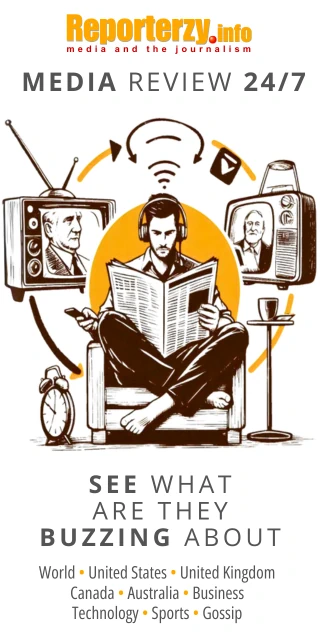 illustration: DALL-E
illustration: DALL-EPress for advertising clients is an effective medium for building brand trust, fame, and popularity. According to global studies, it is one of the media with the highest return on advertising. Data collected by Polish Readership Research indicates that the press also has exceptionally high ad visibility rates, as reading requires full concentration on content.
Press for readers is a source of inspiration, knowledge about the world, practical advice, innovative, valuable, and creative content, topics for reflection and discussion, deepening professional knowledge, and development. Readers consider engaging with the press an intellectual value.
Last year, research from many independent institutions highlighted the distinctive qualities of the press and its high effectiveness:
- The press ranked among the most profitable advertising media. In a UK study on 10 media types, involving 141 brands across 14 product categories, the press ranked first among media in terms of the highest return on advertising 13 weeks after publication and second in long-term return, 24 months after publication.
- The press ranked highly in the brand fitness study conducted by the Polish branch of Group M. Research emphasized that the press is an excellent medium for building brand trust, fame, and popularity. In the ranking of brand and campaign perception, it secured an honorable second place, behind television and ahead of influencers, outdoor advertising, cinema, portals, social media, and radio.
- The press has high attention rates: press ads achieve 91% visibility, with a single reader encountering an ad 10 times in one newspaper issue. These are among the highest rates across all media.
- According to the ranking by the Institute for Media Monitoring, the press is the most opinion-forming medium of the decade. For many years, print and digital press have surpassed television, radio, and other online news services in terms of citation rates and opinion shaping. Last year, it was confirmed that the press has been in first place for an entire decade, year after year.
Such numerous distinctions and high rankings for the press last year reflect the needs of the modern marketing world: in an era of constant stimuli, simultaneous consumption of multiple media, and the increasing spread of fake news, credibility and the ability to hold the audience`s attention for longer are crucial.
Affinity Index and Press Reach
The press not only has high qualitative indicators but also a broad reach. It is often perceived through the lens of target groups based on interests, and within these groups, both the affinity index and press reach are very high. Such effective targeting of an audience interested in a specific topic is hard to find in other media.
At the same time, the press enables access to broad female and male target groups, each with specific characteristics based on life stage, reading habits, and consumer behavior. Early in adult life, the press inspires readers, provides knowledge about the world, and serves as a form of relaxation and aesthetic experience. Young readers value reading as a meaningful way to spend time.
These needs persist into later life stages. However, as readers start families or take on more significant professional roles, the press becomes a source of current, reliable, and practical information, advice on various life aspects, topics for reflection and discussion, and professional development. Mature readers also seek valuable, innovative, and creative content, in-depth articles, inspiration for change, or simply entertainment. Engaging with print and reading attentively is considered an intellectual value, helping shape independent viewpoints.
Greatest Asset: Credibility
The most significant advantages of the press for readers, compared to other media, are credibility, opinion leadership, and a high level of engagement while reading. Press editorial teams employ professional journalists who undergo training, familiarize themselves with press law, understand the responsibility for their words, and whose texts are often subject to multi-stage editing. Content goes beyond mere news - it includes analyses, commentaries, and reports that help readers understand complex issues and develop critical thinking, usually presenting more than one perspective.
60% of digital creators do not verify information before publishing 👇
Published information is signed, and its authors and publishers are aware that they may face legal or civil liability for their publications. Information is verified, as are published photos, which are taken by photojournalists rather than generated by AI. In a world full of misinformation and widespread fake news, the value of receiving reliable information is invaluable. The press plays a crucial role in selecting the most important and interesting news from the overwhelming flow of daily information. It creates a hierarchy of information and builds a complete picture of the world.
The press is a highly engaging medium. Readers pay for a copy of their favorite publication and, according to behavioral economics, consume the content with interest, attentively and comprehensively. Reading print is a multi-sensory experience, requiring focus and fostering reflection. Additionally, advertisements are an integral part of the press, sparking curiosity rather than irritation.
Quality Content
Press content is distributed through multiple channels. Publishers release content in print and digital editions (e-editions, digital subscriptions), on the websites of press brands, and through social media. Print reading is valued for allowing readers to engage calmly with high-quality content.
Readers appreciate the peace and privacy associated with reading, the ability to focus on the most valuable parts of the content, and the option to return to them later. Screen reading allows for quick access to content during breaks from other activities. According to readers, print and online editions complement each other.
PBC webinar "Press readers. Who are they? What makes them different?" can be viewed at
https://www.pbc.pl/webinar-czytelnicy-prasy-kim-sa/
COMMERCIAL BREAK
New articles in section Media industry
Journalism in the age of AI. Why people prefer humans over machines
Krzysztof Fiedorek
Only 12% of people accept news created solely by AI, while 62% prefer those written by humans. At the same time, only 19% notice labels indicating the use of artificial intelligence, while younger audiences ask AI to explain the content to them. These are the findings of the Reuters Institute report on artificial intelligence in media.
Why do we believe fakes? Science reveals the psychology of virals
KFi
Why do emotions grab more attention than evidence, and why can a fake authority overshadow scientific data? Researchers from Warsaw University of Technology, Jagiellonian University, and SWPS University in Poland sought the answers. Here are their findings.
Investigative journalism in Europe. Newsrooms face pressure
KFi, Newseria
Media and political representatives point to the difficult situation of investigative journalism in Europe. Newsrooms are reluctant to invest in this segment due to high costs and the large amount of time and effort required. Most of all, however, they fear legal proceedings.
See articles on a similar topic:
Journalism and Technology. How Indian Newspapers Fight to Survive
KFi
The COVID-19 pandemic accelerated the transformation of India's press industry. Traditional print media, forced to fight for survival, adopted modern technologies ranging from data analysis to artificial intelligence. How do journalists adapt to new roles, and how do media redefine their future in the digital age? Researchers from the Symbiosis Institute of Media & Communication have explored these questions.
The Deadliest Year for Journalism. 124 Fatalities in 2024
Krzysztof Fiedorek
The year 2024 was the deadliest for media professionals since the Committee to Protect Journalists began tracking these statistics. The tragic figures, published in CPJs latest special report, reached record highs in most monitored categories.
Influencers and social video rule information. Digital News Report 2025
Krzysztof Fiedorek
Seconds of vertical clips set the future of news. TikTok, YouTube and an army of influencers pull viewers away from TV sets and newspaper pages. Whoever masters this new pulse seizes not only attention but also control of the story.
Social Media and Relationships. Interesting Research from Palestine
KFi
What does love look like in the digital age? Does technology bring people closer or push them apart? In an era where Facebook and Instagram replace dinner table conversations, social media has become a new space for marital relationships. Researchers from An-Najah National University examined how technology can build bonds but also sow uncertainty.






























